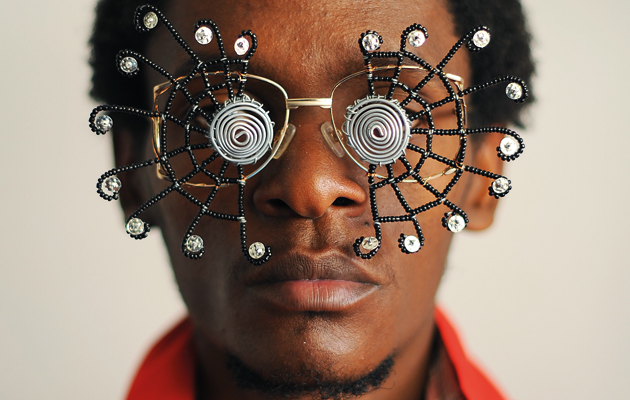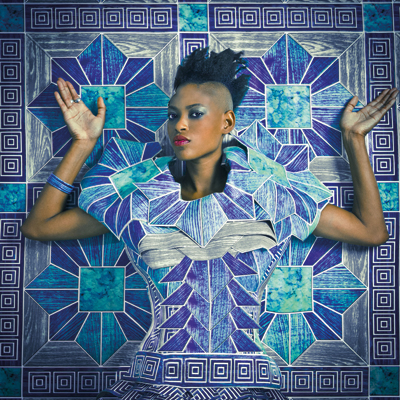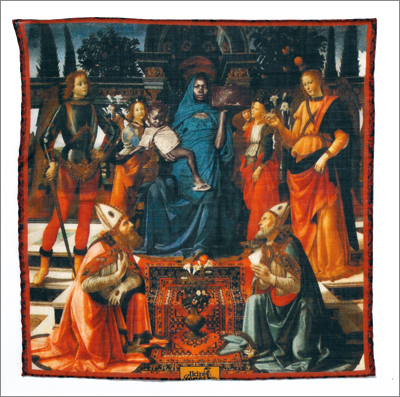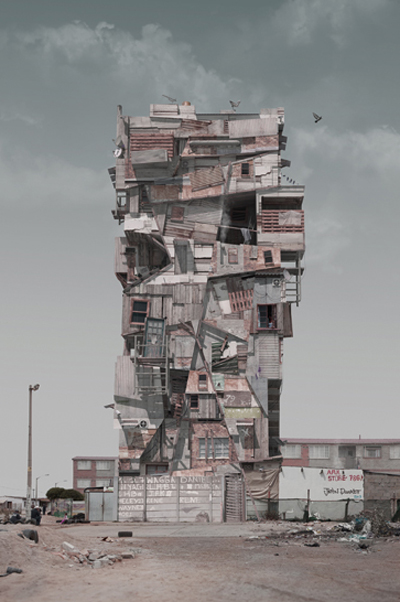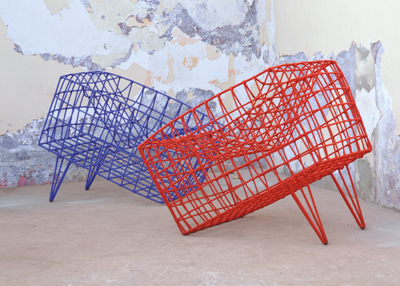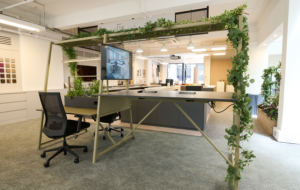|
|
||
|
By avoiding “African issues”, Vitra’s pair of exhibitions present a far more compelling portrait of a multi-faceted, multi-vocal continent, writes Debika Ray “The problem with stereotypes is not that they are untrue, but that they are incomplete,” author Chimamanda Ngozi Adichie says in a video that kicks off Making Africa: A Continent of Contemporary Design. It’s a warning that Amelie Klein was mindful of when embarking on the daunting task of curating this show. She doesn’t claim to present a complete picture of creativity across this vast, changing continent; rather, this excellent and ambitious undertaking raises questions about the nature of design and the relationship between Africa and the wider world, looking past the “triad of poverty, disaster and safaris” often associated with it. The products, art, digital media, fashion, graphics and installations presented address issues such as inequality, race, culture, sexuality, the environment, urbanism and technology – both celebrating Africa and confronting its problems. With a multitude of voices, races and cultures inside the continent and a global diaspora outside it, the question of “who speaks for Africa” was deemed too complex to answer, so works were selected on the basis of their ability to advance the conversation rather than their maker. There are also pieces that nod to our unconscious expectation that Africans will speak about “African issues”, not universal ones – Jim Chuchu’s poster All Oppression is Connected places both slavery and sexism on a spectrum of injustice, while Leanie van der Vyver’s Scary Beautiful shoes highlight the standards of beauty that subjugate women.
Mame, from the series The Studio of Vanities, by Omar Victor Diop, 2013 Parallels are drawn between Africa’s contemporary culture and the confidence of the postcolonial era, as depicted in photos by Jean Depara and Malick Sidibé of 1960s Kinshasa and Bamako nightlife. The hope then was that the newly formed African nations would follow the development trajectory of their former colonisers – an idea illustrated by an accompanying exhibition of postcolonial African architecture – Architecture of Independence – curated by architect Manuel Herz. For these newly independent states, modernism – with its utopian ideals – was the natural vehicle for nation-building, resulting in a proliferation of bold structures such as Rinaldo Olivieri’s La Pyramide in Côte d’Ivoire and Hotel Independence in Senegal by Henri Chomette and Roland Depret, as well as smaller scale housing and educational institutions, throughout the 1960s and 70s. |
Words Debika Ray
Above: Caribbean Sun, by Cyrus Kabiru, 2012
Making Africa: A Continent of Contemporary Design /
Images: Vitra Design Museum, Weil Am Rhein |
|
|
||
|
La Pyramide in Abidjan, Côte d’Ivoire, by Rinaldo Olivieri, 1973 |
||
|
The buildings of this era were designed predominantly by European architects, for whom the continent was a blank canvas for experimentation. It is a clear illustration of the fact that the colonial relationship was not so much dismantled as replaced by a more subtle form of wealth extraction, which contributed to the poverty still associated with many former colonies today. It’s no surprise, then, that the many designers featured in A Continent of Contemporary Design are following a path of their own making rather than mimicking the West. This renewed independence has been facilitated by the internet: versions of Pharrell Williams’s Happy video on YouTube exemplify a global youth culture that now includes Africa, while blogs such as Africa is a Country are reviving the idea of a pan-African identity.
The Madonna, from The Untold Renaissance, by Ikiré Jones, 2014 This narrative challenges our tendency to think of progress in linear terms – there is, it’s clear, no one path for development. Landline infrastructure, for example, was never laid across much of Africa; instead, the region has jumped straight to mobile telephony. There are parallels between this technological leap and the approach to design shown here, with many designers working in a way that the West now aspires to. For example, for many Africans, reuse – as in many developing nations – is standard practice rather than a conscious effort. Senegalese artist Amadou Fatoumata Ba’s furniture made of used tyres and Ghanaian El Anatsui’s Nane artwork made of bottlecaps, which sold for £540,000, highlight the inherent value of materials irrespective of their past use. Elsewhere, Tonney Mugo’s Jua Kali City sculpture depicts the close relationship between the formal and informal sectors that has existed in Africa for decades, while examples of open-source technology demonstrate a creative, bottom-up approach to problem-solving – with the advent of 3D printing, informal, decentralised design and manufacture is likely to be the future for us all.
Skhayascraper rendering, by Justin Plunkett, 2013 One of the final works, Ikiré Jones’s …In Paris 2081 A.D., imagines an African global hegemony. While the global balance of power remains as it is, such a reality appears distant. Indeed, a question that hangs heavy over this exhibition is whether it remains part of the continual, well-meaning commentary about Africa by outsiders. It is a question that may come more sharply into focus if, as the gallery hopes, the exhibition is shown in an African city, where it will no doubt encounter a more critical audience. It would be churlish, however, to ask why this particular exhibition didn’t originate in Africa or have an African curator, when the reasons for this are part of a so much wider and more complex structure. Instead, one might hope that the conversations it sparks could contribute to more Africans curating exhibitions about design originating in their own countries – or, indeed, exhibitions that have nothing to do with Africa at all.
Fauteil Sansa bleu, by Cheick Diallo, 2011 |
||

